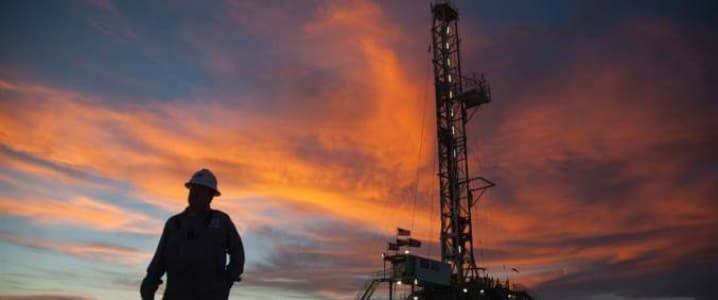The oil price crash that destroyed a lot of smaller oil producers has not spared the finances of even the oldest and largest oil companies. Trying to keep the precious dividends intact and growing, Big Oil is focusing on cost control and cash preservation, and has effectively deferred investments in new ultra-expensive drilling ventures.
One of the biggest companies, U.S. Chevron, is now planning to capitalize on its vast acreage holdings in the Permian. Investments in new mega projects, at least over the next few years, are not currently on the table, chief executive John Watson told Reuters in an interview published this week.
Chevron is now betting big on the Permian; the star shale play straddling West Texas and New Mexico that has seen most of the resurgence since oil prices started steadily recovering in the fourth quarter last year.
Unlike some other (and smaller) producers who have just recently rushed to secure holdings in the shale play, Chevron is not a newcomer to the Permian – the group and its legacy companies have held acreage in the area since the early 1920s.
Now the new oil order is causing the company to shift strategies away from mega drilling projects to secure steady returns in more conservative projects in order to protect dividends and keep them growing.
Chevron reported earnings of $0.22 per share for the fourth quarter of 2016, compared with a loss of $0.31 per share for the fourth quarter of 2015, in line with analyst expectations that it would return to profit, but still missing the EPS estimates by a wide margin. Full-year 2016 results showed a loss of $497 million compared with earnings of $4.6 billion in 2015, which was the first annual loss Chevron has booked since 1980. Related: Is Natural Gas In The Midst Of A Boom-Bust Cycle?
Despite the first annual loss in a generation, Chevron increased the 2016 annual dividend payout for the 29th consecutive year.
This year, Chevron plans to spend around $2.5 billion on shale and tight investments, the majority of which is slated for the Permian Basin, a 67-percent increase over last year. In the upstream investments for 2017, the funds for the Permian are second only to the $3-billion investment in the expansion of the Tengiz field in Kazakhstan.
Chevron’s production in the Permian was 90,000 net barrels of crude oil per day in 2016.
Watson expects the company’s output in the shale play to increase eight times over the next decade and reach 700,000 bpd. Chevron will also be adding 9 drilling rigs by the end of 2018 to the 11 rigs that it currently operates in the Permian.
Chevron’s acreage in the shale play amounts to 2 million net acres, of which, 85 percent is free of royalties to landowners or have low royalties. Related: OPEC Deal Extension Looks Shaky As Shale Hedges Production
At a time when all companies are striving to streamline and cut costs, Chevron’s increased focus on the lower-cost Permian—in which it has the royalty advantage—could help it return to profit this year, and continue boosting dividends.
“We’re focused on growing value and growing the dividend over time,” Watson told Reuters.
Another U.S. Big Oil firm—Exxon—is also stepping up its shale drilling and shifting away from massive ultra-expensive megaprojects. Exxon will dedicate a quarter of its 2017 spending budget on shale, putting $5.5 billion into the effort.
“More than one quarter of the planned spending this year will be made in high-value, short-cycle opportunities, including in the Permian and Bakken basins,” Exxon said in early March.
The lower-for-longer oil price reality is prompting both Exxon and Chevron to invest in quicker returns in shale-on-home-soil instead of pursuing huge costly projects that take years to create and years more to yield returns on investment.
By Tsvetana Paraskova for Oilprice.com
More Top Reads From Oilprice.com:
- Tanker Traffic Points At Much Tighter Oil Markets
- Geopolitical Risk Premium Is Back In Oil
- Saudi Arabia Vs. Russia: The Next Oil Price War


















